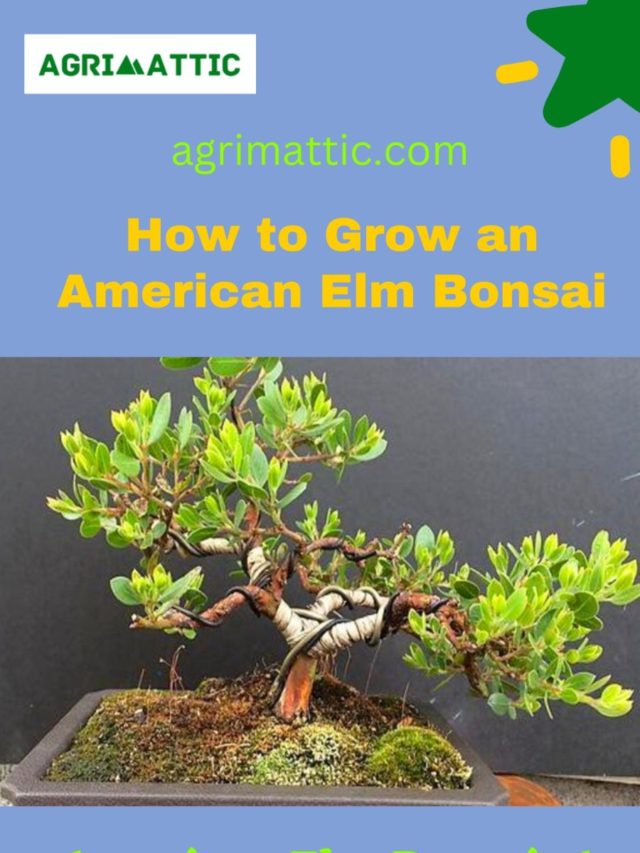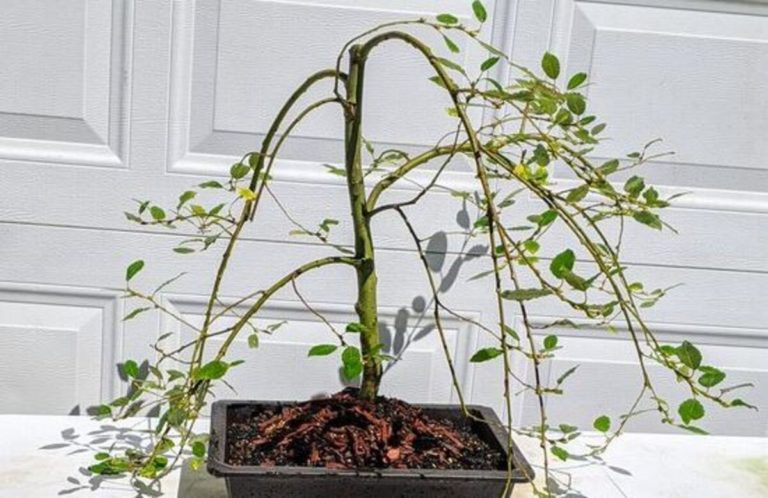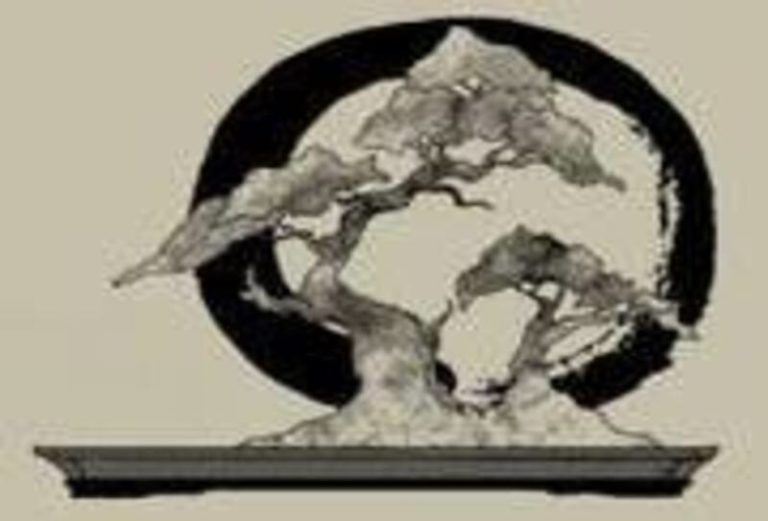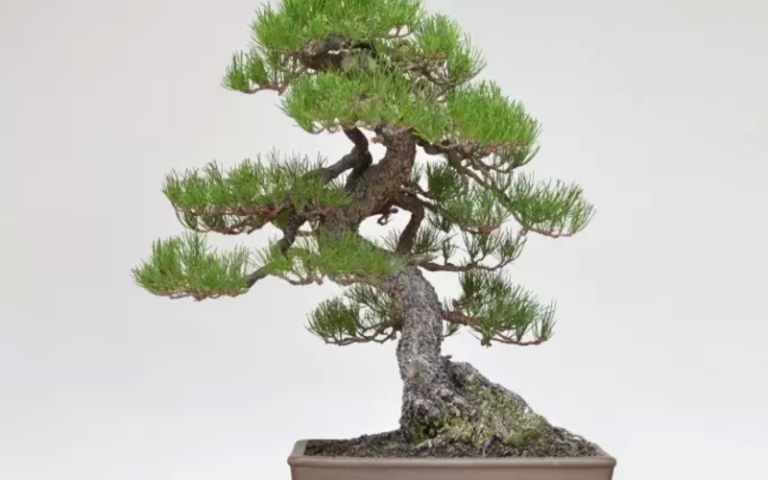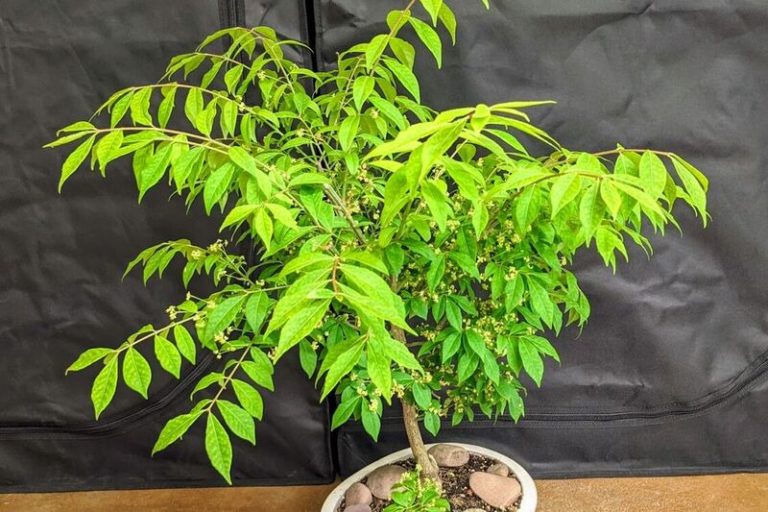American Elm Bonsai: A Versatile and Resilient Tree for Bonsai Enthusiasts
Bonsai trees are miniature trees that are grown in small pots and shaped to look like full-sized trees. The American Elm Bonsai tree is one of the most popular types of bonsai trees. It has a unique appearance with its small, serrated leaves and intricate branching patterns.
What is American Elm Bonsai?
An American Elm Bonsai is a small version of the American Elm tree that has been grown and trained in a small pot to resemble a full-sized tree. Bonsai is an ancient Japanese art form that involves growing and shaping trees in small containers to create a miniature representation of a full-sized tree.
American Elm Bonsai trees are popular because of their unique appearance, which features small, serrated leaves and intricate branching patterns. They require specific care and attention to thrive, but with proper care, they can live for many years and bring beauty to any indoor or outdoor space.
History and Origins of American Elm Bonsai
American Elm Bonsai is closely related to the art of bonsai, which started in China more than a thousand years ago and was later developed in Japan. In the art of bonsai, trees are grown and shaped in small pots to look like smaller versions of full-sized trees.
The American Elm tree is native to North America, and it is unknown when the first American Elm Bonsai was made. However, it is likely that American Elm Bonsai trees have been there since the early days of bonsai cultivation in the United States.
American Bonsai Society was founded at the beginning of the 20th century, which helped to popularize bonsai in the United States. Demand for American Elm Bonsai trees increased as interest in bonsai expanded.
Today, American Elm Bonsai trees are popular among bonsai enthusiasts due to their unique appearance and the challenges they present in terms of care and training. With proper care and attention, an American Elm Bonsai tree can live for many years, providing beauty and enjoyment to its owner.
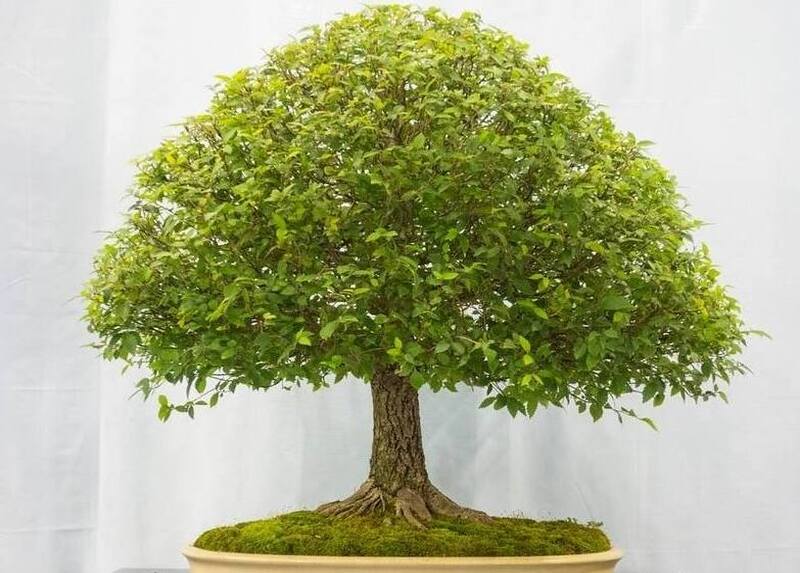
American Elm Bonsai and its Symbolism
In Japanese culture, bonsai trees are often associated with symbolism and are believed to represent different qualities and traits. The American Elm Bonsai tree is no exception and has its own unique symbolism.
One of the primary symbols associated with the American Elm Bonsai is resilience. American Elm trees are known for their ability to withstand harsh weather conditions and environmental stresses. Similarly, an American Elm Bonsai represents the ability to overcome challenges and thrive in adverse conditions.
Another symbol associated with American Elm Bonsai is wisdom. The intricate branching patterns and unique appearance of the tree are said to represent the wisdom gained from years of growth and experience.
In addition to resilience and wisdom, American Elm Bonsai trees are also associated with balance and harmony. The careful shaping and training of the tree to achieve the desired form is said to represent the importance of balance and harmony in life.
Overall, the American Elm Bonsai tree has a rich symbolic history in Japanese culture and is a beautiful representation of resilience, wisdom, balance, and harmony.
Characteristics of the American Elm Bonsai
Numerous distinguishing characteristics make the American Elm Bonsai tree a popular option among bonsai devotees. Here are a few of the distinguishing features of the American Elm Bonsai:
- Size: The American Elm Bonsai is typically cultivated in a container 8 to 10 inches wide and 4 to 6 inches deep.
- Leaves: The leaves of the American Elm Bonsai are small and serrated, measuring about 1 to 2 inches in length.
- Bark: The bark of the American Elm Bonsai is light gray in color and has deep, diamond-shaped ridges that give it a distinct appearance.
- Trunk: The trunk of the American Elm Bonsai is typically straight and upright, with a slightly tapered shape.
- Branching: The branching pattern of the American Elm Bonsai is intricate and dense, with many small branches and twigs.
- Fall color: In the autumn, the leaves of the American Elm Bonsai turn a vibrant yellow color.
- Growth rate: The American Elm Bonsai is a relatively fast-growing tree, with new growth appearing in the spring and summer months.
The American Elm Bonsai is a magnificent tree with a distinct appearance, intricate branching, and a rapid growth rate. It can be a beautiful addition to any indoor or outdoor location with the appropriate care and maintenance.
How to Grow an American Elm Bonsai
Growing a bonsai American Elm tree can be rewarding and enjoyable. Following these procedures will help ensure success:
Choose the right tree: When selecting an American Elm Bonsai, look for a tree with a strong, healthy trunk and good branching structure. Avoid trees with damaged or weak branches or trunks.
Choose the right container: Select a container that is proportional to the size of your tree and has adequate drainage openings to prevent water accumulation.
Soil: Use a well-draining soil mix that is specifically formulated for bonsai trees. This will help prevent waterlogging and root rot.
Watering: Water your American Elm Bonsai tree regularly, making sure to keep the soil moist but not waterlogged. Avoid letting the soil dry out completely, as this can damage the tree’s roots.
Pruning: Regular pruning of your American Elm Bonsai tree will aid in maintaining its shape and promoting healthy growth. When the tree is not actively developing, pruning should occur in the spring or autumn.
Wiring: Wiring can be used to help shape and train the branches of your American Elm Bonsai. Make sure to use soft, flexible wire and be careful not to damage the tree’s branches.
Fertilizing: Use a balanced fertilizer specifically designed for bonsai trees to help promote healthy growth. Fertilize your American Elm Bonsai tree every 4-6 weeks during the growing season.
Overall, growing an American Elm Bonsai tree requires patience, attention to detail, and a love for the art of bonsai. With the right care and attention, your tree can thrive and bring beauty to your indoor or outdoor space for many years to come.
Benefits of American Elm Bonsai
Growing an American Elm Bonsai has several advantages for both the tree and the gardener. Here are a few advantages:
- Aesthetics: The American Elm Bonsai tree is a beautiful and unique addition to any indoor or outdoor space, adding natural beauty and serenity.
- Relaxation: The mindful tending of a bonsai tree, such as an American Elm Bonsai, has been shown to provide calming and stress-relieving effects on its caretakers.
- Education: It is said that tending to a bonsai tree, such as an American Elm Bonsai, may be a calming and contemplative experience.
- Environmental benefits: Growing plants, including bonsai trees, can aid in improving air quality, reducing noise pollution, and promoting environmental health overall.
- Health benefits: Bonsai trees and other indoor plants provide health benefits like reducing stress and increasing oxygen levels in the home.
- Community: You may find other people who share your interest in nature and gardening by cultivating an American Elm Bonsai, and this can be a wonderful way to meet new people.
The advantages of cultivating an American Elm Bonsai range from aesthetic and relaxing to educational and environmental. Growing a bonsai tree can be a rewarding and gratifying experience whether you are an experienced horticulturist or a beginner.
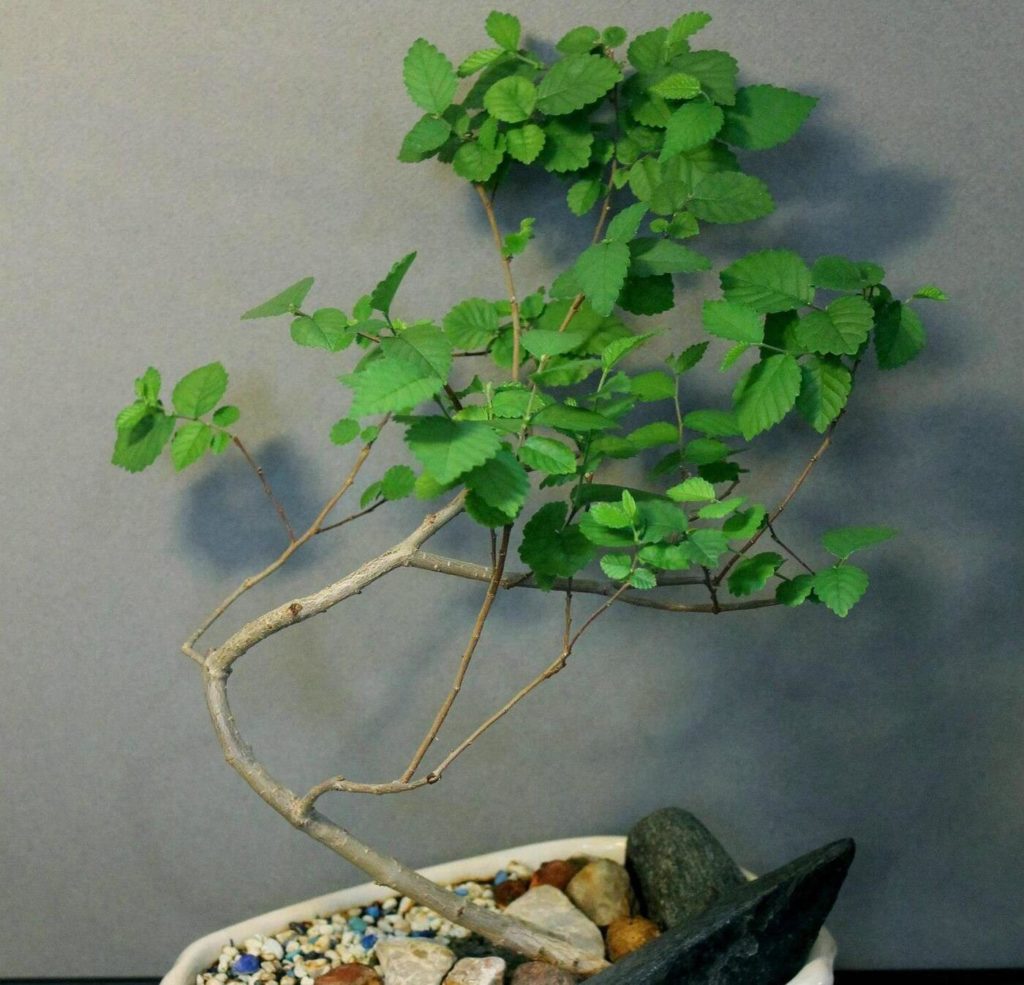
Styling and Design of American Elm Bonsai
The American Elm Bonsai tree can be styled and designed in a variety of ways, depending on the gardener’s preferences and the desired look of the tree. Here are some popular styling and design techniques for American Elm Bonsai:
Informal upright style: This style features a straight trunk with slightly curved and asymmetrical branches that give the tree a natural, organic look.
Cascade style: This style features a downward-sloping trunk and branches that cascade down towards the ground, creating a waterfall-like effect.
Slanting style: This style features a slanted trunk with branches that extend outwards at an angle, creating a dynamic and visually interesting shape.
Multi-trunk style: This style features multiple trunks growing from the same base, giving the tree a unique and natural appearance.
Windswept style: This style features a trunk and branches that appear to be windswept, as if the tree has been shaped by the elements over time.
Formal upright style: This style features a straight and symmetrical trunk with evenly spaced and balanced branches, giving the tree a more formal and elegant look.
When designing and styling an American Elm Bonsai, it is essential to consider the tree’s natural shape and development pattern, and to work with its distinctive characteristics to create an attractive and balanced design. Pruning, cabling, and training techniques can be used to shape and direct the growth of a tree, and regular maintenance and care are required to keep it healthy and flourishing.
How to Care for an American Elm Bonsai
Caring for an American Elm Bonsai tree involves several key steps to ensure its health and growth. Here are some tips on how to care for an American Elm Bonsai:
- Watering: Bonsai trees of the American Elm require frequent irrigation, particularly during the growing season. To prevent root decay, it is vital to keep the soil moist, but not soaked, at all times. When the upper inch of the soil is dried to the touch, watering should be performed.
- Fertilizing: American Elm Bonsai trees require regular fertilization to provide them with the necessary nutrients for healthy growth. A balanced, slow-release fertilizer can be applied every few weeks during the growing season.
- Pruning: Regular pruning is essential to keeping an American Elm Bonsai tree healthy and well-shaped. Branches should be pruned back to maintain the desired shape and encourage new growth.
- Wiring: Wiring can be used to guide the growth of an American Elm Bonsai tree, but care should be taken not to damage the branches or trunk. The wire should be wrapped loosely around the branch or trunk and removed once the desired shape has been achieved.
- Repotting: American Elm Bonsai trees should be repotted every few years to provide fresh soil and prevent root-bound growth. Repotting should be done in the early spring, before new growth begins.
- Sunlight: American Elm Bonsai trees require ample sunlight for optimal growth. They should be set in a bright, sunny location, but should be shielded from direct, intense sunlight, which can burn the foliage.
- Temperature and Humidity: American Elm Bonsai trees prefer cooler temperatures and high humidity. They should be kept in a location with moderate temperatures and protected from drafts and extreme temperature fluctuations.
By following these care tips, an American Elm Bonsai tree can thrive and grow into a beautiful and healthy addition to any indoor or outdoor space.
American Elm Bonsai Care Sheet
| Aspect | Care Tips |
| Watering | Keep the soil moist, but not waterlogged. Water when the top inch of soil is dry to the touch. |
| Fertilizing | Apply a balanced, slow-release fertilizer every few weeks during the growing season. |
| Pruning | Regular pruning is essential to maintain the desired shape and encourage new growth. |
| Wiring | Use wire to guide tree development without damaging branches or trunk. Remove wire after shaping. |
| Repotting | Repot every few years in early spring before new growth begins to provide fresh soil and prevent root-bound growth. |
| Sunlight | Place in a bright, sunny location but protect from direct, intense sunlight that can scorch leaves. |
| Temperature and Humidity | American Elm Bonsai trees prefer cooler temperatures and high humidity. Keep in a location with moderate temperatures and protect from drafts and extreme temperature fluctuations. |
By following these care tips, you can ensure that your American Elm Bonsai tree thrives and remains healthy.
Conclusion
Growing an American Elm Bonsai tree is a rewarding and beautiful experience. With proper care and attention, you can enjoy the beauty of this unique plant for years to come.
FAQ
Q: What is American Elm Bonsai?
A: It is a small tree grown in a pot through the art of bonsai, a miniature version of the American Elm tree.
Q: How long does it take to grow an American Elm Bonsai?
A: It can take several years, requiring patience and consistent care to shape and train the tree.
Q: Can American Elm Bonsai be grown indoors?
A: It can survive indoors but prefers the outdoors, where it can receive ample sunlight and fresh air.
Q: What kind of soil should be used for American Elm Bonsai?
A: It prefers well-draining soil that retains moisture but does not become waterlogged.
Q: When is the best time to prune American Elm Bonsai?
A: Late winter or early spring during the dormant season, encouraging new growth in the spring.
Q: Can American Elm Bonsai tolerate cold temperatures?
A: It is a hardy tree that can tolerate cold temperatures, but should be protected from extreme cold and frost.
Q: How often should American Elm Bonsai be watered?
A: Water when the soil is dry to the touch, usually every few days during the growing season and once a week in the winter.
Also Read:


